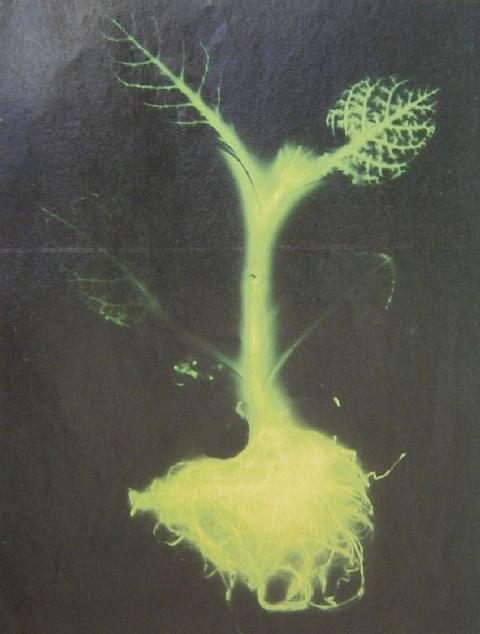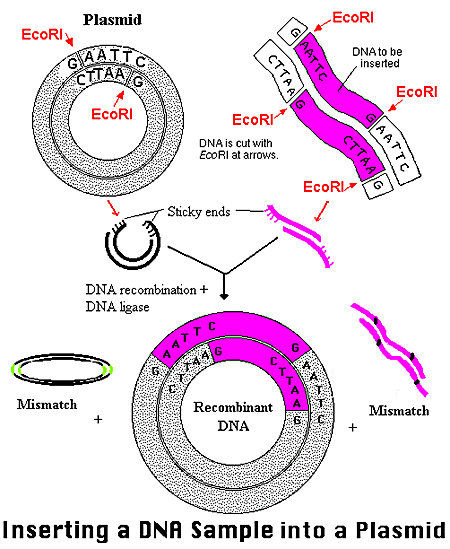
Image permission pending from Brannon and Margaret Carter at http://crystal.uah.edu/~carter/index.html
Figure 1. Inserting a DNA sample to make a recombinant plasmid for the production of transgenic bacteria.
Background (Purves et al.,
1998):
A transgenic organism is , in its most basic sense,
an organism to which a new gene has been added. The first efforts
at creating a transgenic organism were achieved using bacterium as hosts.
Bacteria are good candidates for being transgenic organisms because their
circular pieces of DNA, plasmids, are good methods of importing new DNA.
Yeast cells are frequently used for creating transgenic organisms because
they are easy to grow and have an extremely small genome while also possessing
many of the characteristics of a eukaryote. Plant cells are frequently
used due to their totipotency. It is possible to produce an entirely
new plant with the desired genetic material from a single cell.
Methods:
+Vectors of Importing New Genes
Plasmids:
A plasmid is a piece of self-replicating circular
DNA usually found in bacteria that unravels when it is cut with a restriction
enzyme and has sticky ends on each side that will accommodate
a new DNA segment. In order for this to be possible, each side of
the plasmid is cut with the same restriction enzyme and the foreign DNA
is also given the same treatment. DNA
ligase is also added to fill the gap. The antibiotic resistance gene
of a plasmid is often used as a genetic marker for creating transgenic
organisms. In disrupting an antibiotic resistance gene with foreign
DNA, it becomes vulnerable to that antibiotic and can then be destroyed
by that antibiotic but not the other type of antibiotic protected against
by another antibiotic resistance gene in the plasmid. This can be
exploited in a petri dish situation to verify which plasmid has taken up
the DNA as needed by bombarding them with different types of antibiotics.
This determines which plasmids have taken up the foreign DNA and which
ones have not due to their susceptibility to said antibiotics. A
detailed view of the procedure can be seen in the image below.

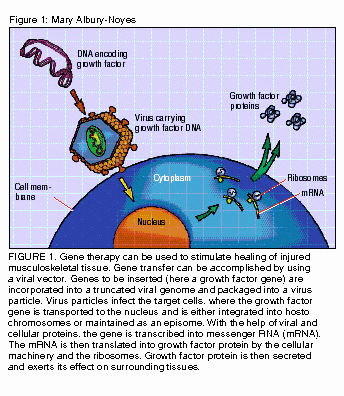
Figure 2
Image permission pending from Dr. Huard at http://www.physsportsmed.com/issues/2000/02_00/huard.htm
Artificial Chromosomes (Purves et al., 1998):These contain sequenced centromeres and telomeres as well as an origin of replication. They are about 10,000 base pairs in size and can accommodate 50,000 to 1.5 million base pairs of inserted new DNA. They are for all intents and purposes, fake but functional chromosomes. One of such artificial chromosomes is depicted below in this image.
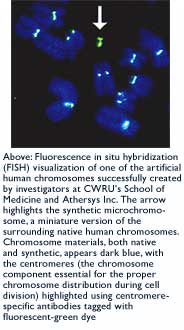
Figure 3
Pending permission from George Stamatis at
http://www.cwru.edu/menu/research/synchrom.htm
Plasmid Vectors for Plants (Purves et al., 1998):
Ti plasmid (T DNA), produces copies of itself in chromosomes
in infected plant cells with the crown gall disease, T DNA has restriction
enzyme sites and new DNA can be spliced in. Cells
from the gall can then be grafted into a new medium and a plant can be
grown with the needed genetic material. The image below shows the
generation of these galls containing the desired genetic material in plants
with the virus Agrobacterium tumefaciens.
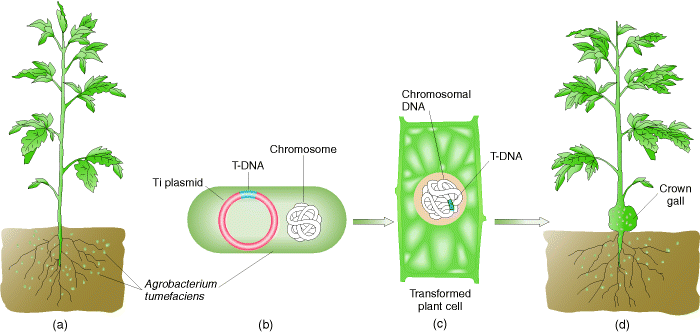
Insertions(Purves et al., 1998):
Electroporation-
The cells for the incoming DNA vector are electrocuted
and membranes rendered permeable so DNA can enter from environs.
Injection-
A fine pipette is used to insert DNA into a cell,
usually a larger cell than usual.
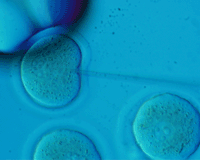
Figure 5- A pipette is used to inject genetic material into a large cell to create a transgenic organism. *Image permission pending from the UCSD Cancer Center.*
Lipofection-
DNA coated with phospholipids to form liposomes, they
fuse to the cell membrane and allow DNA to enter target cell.
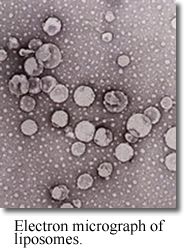
Figure 6- An Electron Micrograph of the Liposomes used in Lipofection as a method of creating a transgenic organism. Image permission pending from Dr. Cheetham at www.carleton.ca/~jcheetha/
Particle Bombardment-
Tiny particles of Au or W coated with DNA are shot
into cells.
Applications:
Protein Production-
An expression vector with protein producing DNA is
imported into a cell through the use of plasmids into a bacterial cell.
This causes the bacterial cell to then produce said protein. This
method can be used in medicine to farm proteins on a wide-scale such as
Insulin, Erythyroprotein, or Tissue Plasminogen Activator. An image
of this can be seen below:
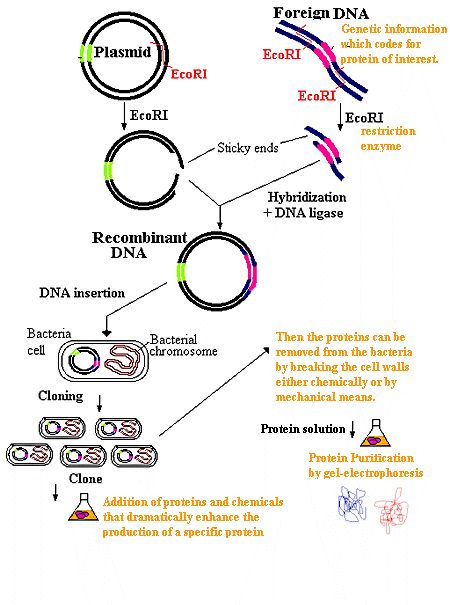
Figure 5
The creation of an expression vector with which proteins
can be grown.
Image permission pending from Brannon and Margaret Carter at http://crystal.uah.edu/~carter/index.html
Agriculture (Purves et al., 1998):
Insecticides-
have been changed with Ti vector to produce strains
such as B. thuringiensis that is toxic to insect larvae
Herbicide-
adding an enzyme into plant chloroplasts that breaks
down glysophate, which is the active ingredient of round-up
Nutrition-
add promoter signals for expression in developing
rice grains, cause enzymes that convert precursors into Vitamin A, rice
on its own cannot do this and it makes it more nutritionally valuable
"Pharming":
Some enzymes can be farmed from livestock in their
milk by implanting an enzymatic gene near the genes in an expression vector
that produce a normal milk protein in a developing livestock embryo so
that the desired enzyme is produced in the milk of the livestock offspring.
More information on this technique and a diagram can be seen at http://www.biotechnology.gov.au/biotechnologyOnline/human/production/h_prod_pharm_img.htm.
I close with perhaps one of the most tantalizing and famous of photographs of a transgenic organism. It is a photograph of a tobacco plant that has been genetically engineered with a fluorescent gene that causes it to glow...
